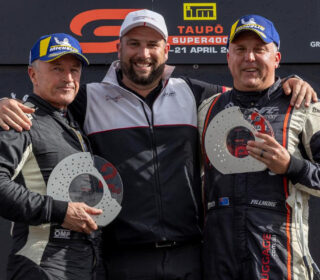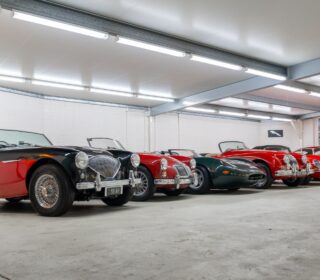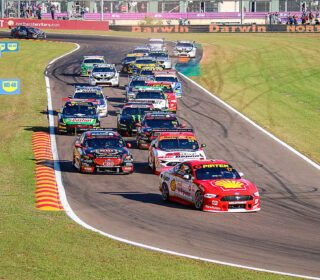NUMBER CRUNCH: ADVANTAGE MUSTANG AT THE BEND
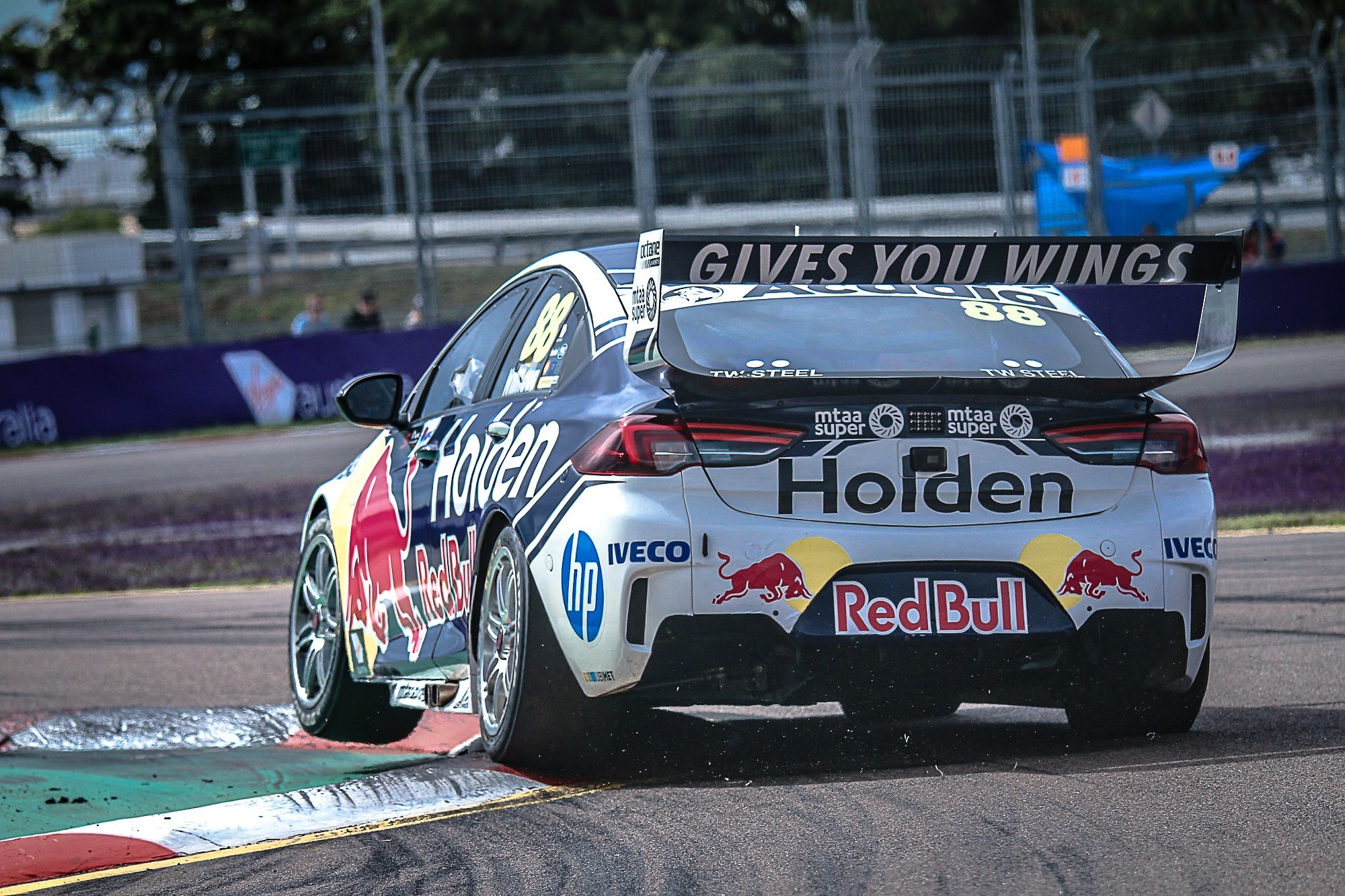
THE FORD MUSTANG did have a sizable advantage at The Bend Motorsport Park – but don’t blame it for the Red Bull Holden Racing Team’s struggles at the OTR SuperSprint a few weeks ago.
AS MANY predicted, The Bend Motorsport Park’s fast and flowing 4.95 kilometre layout proved challenging if you weren’t in a Ford Mustang across the 10th event of the 2019 Supercars Championship, with Fords dominating the weekend and finishing 1-2 in each race.
Much like they did at Phillip Island, the Blue Oval product was in a class of it’s own at the weekend – with Scott McLaughlin clearly top of that class once again as he powered to another double victory and an even bigger championship lead.
However the results only tell a portion of the story so The Race Torque team have crunched the numbers and delved a bit deeper to get into some of the details of who did what.
Comparing 2018 to 2019 produced some fascinating comparisons that give additional context to the form guide most already understand; The Mustang is very good, some of the Holden teams are going well and Triple Eight are struggling, in some places, more than they would like.
TRACK EVOLUTION
For starters, we need to take into account that The Bend is now more than a year old and one of the talking points was the circuit’s evolution year-on-year – basically, it’s much faster now than it was the first time Supercars visited.
To find out just how much faster the circuit is, we averaged out the improvement in fastest lap time in both Sunday qualifying and the race between this year and last.
Cars this year were on average 1.32 seconds faster in qualifying and 1.31 seconds faster per lap in the race than they were in 2018 – so we’ll use 1.3 seconds as a rounded figure to ensure we take into account track evolution of a still brand-new surface when comparing 2018 for 2019.
METHODOLOGY
We’re comparing the fastest laps in qualifying for the Sunday Race at The Bend in 2018 and 2019, and the fastest race lap time for the races each year as well.
Our key like-for-like comparisons; both Shell V-Power cars, both Red Bull cars, three of the four Tickford cars, remain the same year on year. We’ve only measured them – it wouldn’t be fair, for example, comparting Lee Holdsworth in the Team 18 Commodore last year to the Tickford Mustang this year.
For example, to find out Red Bull HRT’s relative pace year on year we found the difference between lap times from 2018 and 2019 for each of their drivers, and averaged them to get the number.
We then removed the 1.3 seconds of track improvement from the equation to get the real year-on-year pace comparison. For example:
- JAMIE WHINCUP
2018 Qualifying time: 1m48.6498s
2019 Qualifying time: 1m47.9947s
Gross Improvement: 0.6551 seconds
Track Improvement: 1.32 seconds
Net Improvement: -0.6649 seconds.
We did this for both their qualifying times and their fastest race laps.
It’s a simple comparison, really, and doesn’t take into account race pace over a distance – but the numbers back up the key trends we’ve already seen and that have already stimulated parity change and intense debate throughout the year.
PONY EXPRESS
THE MUSTANG is much, much faster than the Falcon at The Bend, as most predicted.
Taking into account the 1.3 seconds worth of track evolution year on year, the Mustang was on average 0.4313 seconds quicker than the Falcon in 2018.
In qualifying the Mustang was on average 0.656 seconds faster, which is a huge margin bolstered by Scott McLaughlin’s remarkable qualifying pace and the fact that the DJR Team Penske cars weren’t very good at The Bend last year.
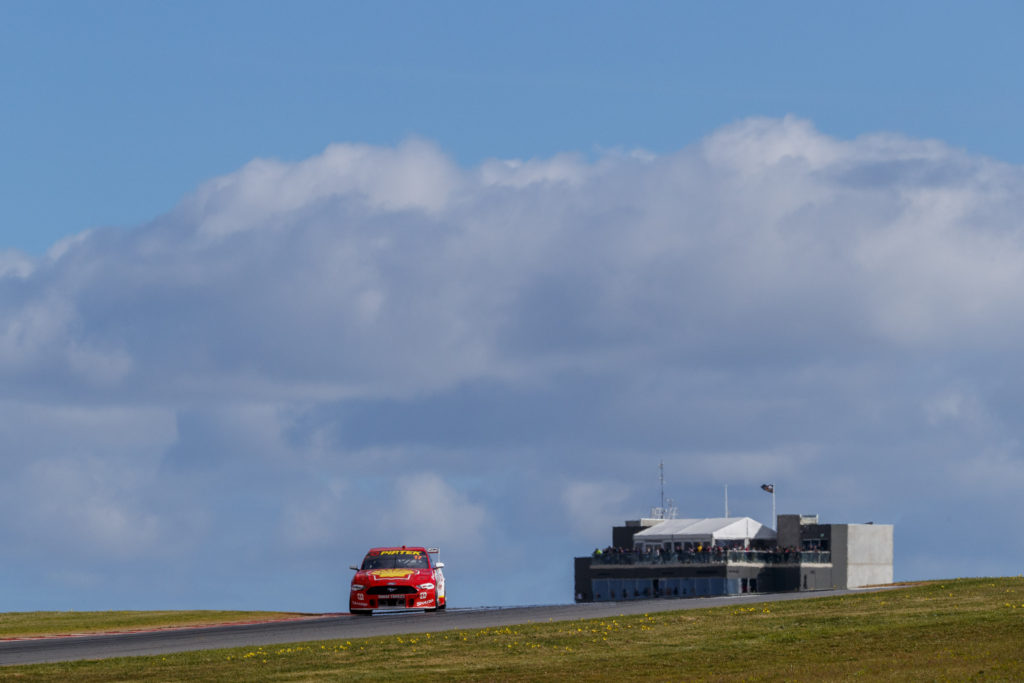
Factoring in track improvement, Scott McLaughlin was 0.87s faster year on year while Will Davison improved 0.87 seconds which perhaps more accurately reflects the improvements in the Mustang over 23Red’s FG-X Falcon last year – which was strong at The Bend in 2018.
Tickford’s improvement is apparent: Across qualifying and races, they improved 0.68 seconds from 2018 to 2019 – nearly a second quicker on average in qualifying and 0.3 seconds better in the race.
The Shell V-Power Mustangs gained just under 0.2 seconds year on year with their race pace actually slower on average than 2018; Fabian Coulthard’s struggles in Car 12 no doubt assisting that.
To summarise, irrespective of individual performances it shows that the Mustang was a significant step forward from Falcon at The Bend.
HOLDEN ON
HOLDEN’S pace at The Bend at the weekend back up the theory that the Mustang is a significant improvement on the Falcon last year.
Across the entire GM stable, Holden products lapped on average 0.18 seconds slower this year than last.
A few key teams bring that average down – more on that later – so essentially, year on year, the Holden is doing the same kind of lap time as it was in 2018 while, at The Bend at least, the Ford has taken a massive leap forward.
That’s why the Holden was the car to have in 2018 while twelve months later the Blue Oval were streets ahead.
Across qualifying and racing, GRM (-0.053s), Erebus (-0.137s), and BJR (-0.248s) were within fractions of their 2018 pace.
Walkinshaw Andretti United’s struggles were proved by the number crunching: they were 0.78 seconds slower in qualifying in 2019 compared to 2018, and 0.13 slower in the race for an average loss of 0.45s year on year. Not great, while it was worse for Tekno who were on average 0.7 seconds slower this year than last.
NISSAN IMPROVEMENT?
Yes. Slightly. Our numbers show that the Nissans were on average 0.0030 seconds faster this year than last; slower in qualifying to the tune of 0.3 seconds, but then quicker in the race by the same margin to square the ledger.
This backs up the fact that the team believes their recent aero tweeks have made the car a much better racing proposition – but we need more data to really showcase that, so lets see how they go in New Zealand.
TEAM TROUBLE
SO the Ford is much faster and broadly the Holden’s are about the same last year at The Bend – hence the change in pecking order.
But in team land it’s vastly different and while our numbers expose the fact that the Mustang had a massive speed advantage at The Bend, it also re-enforces the troubles the Red Bull Holden Racing Team is facing this year.
Much like Phillip Island, where they appeared all at sea, the team struggled mightily at The Bend.
Removing track evolution from the equation, the RBHRT cars were 1.22 seconds slower in qualifying this year compared to qualifying. It’s a huge, huge margin.
The number is distorted slightly by Shane van Gisbergen’s woes this year: he was 16th in qualifying on Sunday and 1.7 slower than he was in 2018. Jamie Whincup was 0.6 seconds slower than 2018, however, so the margin is still sizable irrespective of the one-lap woes of the #97.
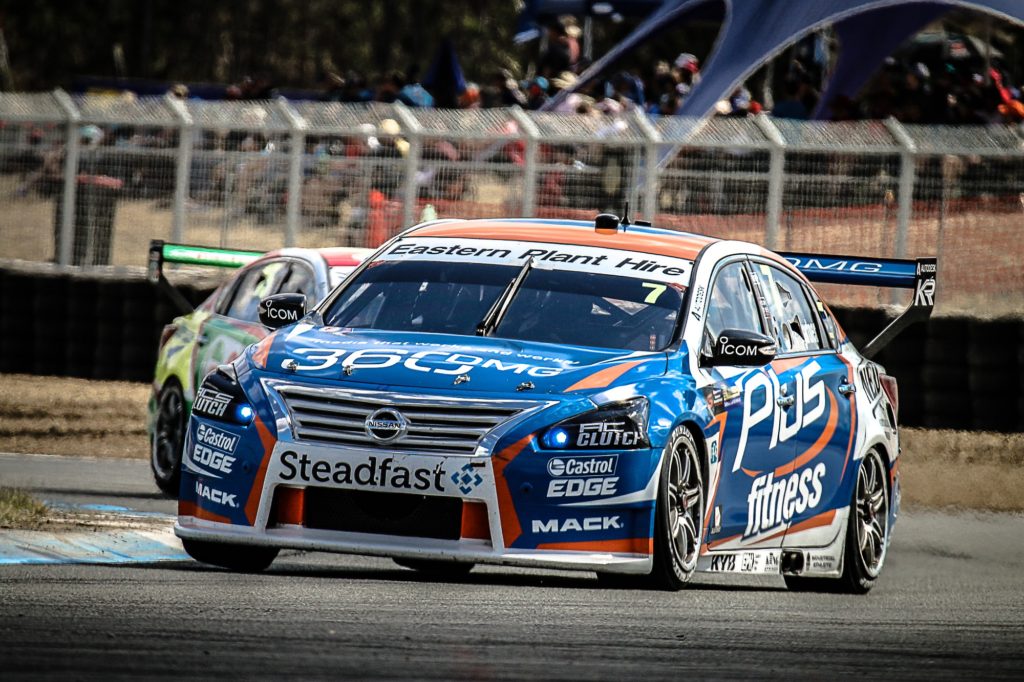
Their improvement across the weekend was apparent; in race pace terms they were 0.5 seconds off their 2018 pace (which, remember, was the class off the field at The Bend last year).
So on average, Jamie Whincup and Shane van Gisbergen were 0.87 seconds slower this year than last.
What does that mean? It’s pretty clear that the team is continuing to struggle to consistently dial in their cars following the pre-season regulatory changes this year. At high speed, fast and flowing circuits their cars are still not very good.
While the team admitted to throwing the kitchen sink at their pair of entries to try and find some direction, there’s no getting around the fact that they were both dramatically slower this year than last relative to their Holden-driving rivals.
Of the other Holden teams, Matt Stone Racing found 1.4 seconds after struggling badly at The Bend in 2019.
Team 18 found massive time this year with Mark Winterbottom posting a strong weekend performance – the Blue and Yellow Holden 0.92s quicker this year than last.
But Triple Eight were miles behind them all on one lap pace all weekend.
While their race pace was much better and the results solid, it’s a damming number given the importance of qualifying.
WHAT DOES IT MEAN?
HOLDEN, via their homologation team that just happens to be Triple Eight Race Engineering, were quick to talk up the Mustang’s pace advantage at The Bend and it may have resulted in them getting a parity adjustment.
The thing is, they are correct: the new Ford has produced a massive performance increase year-on-year and clearly at the fast, flowing aero-sensitive circuits the Mustang is a monster still.
However, the numbers also expose the massive struggles that Triple Eight continue to face at those kinds of circuits, so comparing their cars to the Mustangs isn’t the right thing to do.
At The Bend, Triple Eight lost more pace year on year than anyone, while other key Holden teams all but maintained their status quo, if only to be jumped by the Mustangs.
So, to summarise, at The Bend Motorsport Park:
- The Mustang was on average 0.43 seconds faster than the Falcon last year.
- The Holden Commodore was on average 0.18 seconds slower than 2018
- The Nissan was on average 0.003 seconds faster than 2018
And
- Thanks to their own internal improvement and the speed of the Mustang, Tickford were 0.6 seconds quicker than in 2018
- Holden teams, GRM, BJR and Erebus were within 2-3% of 2018.
- Walkinshaw (0.5 seconds) and Tekno (0.7 seconds) were significantly slower
And finally;
- Triple Eight were 1.2 seconds slower in qualifying and 0.5 seconds slower in the races compared to last year; an average of 0.87 seconds.
IN SUMMARY
THIS weekend the championship heads to New Zealand and the high-speed, bumpy Pukekohe Park circuit.
It’s a different kind of track and though there’s some high-speed, aero sections it’s more about ride control over the notorious bumps and kerbs, power down and straight-line handling.
Will the results from The Bend have any bearing on this weekend? It’s hard to say. Will the parity changes assist the Commodores? Again, it’s a tough question to answer without any back to back comparisons available.
Supercars will have looked at more than just the results from The Bend in isolation when it came to making their latest raft of parity adjustments, but if there’s ever been a venue that showcases both how far ahead the Mustang is on high-speed circuits and how far behind some teams are at the same venues, it’s Tailem Bend.



